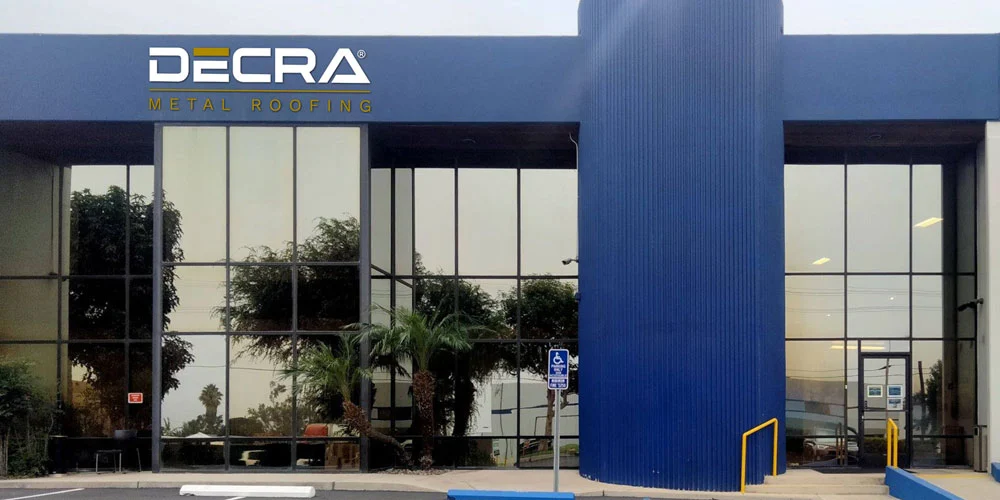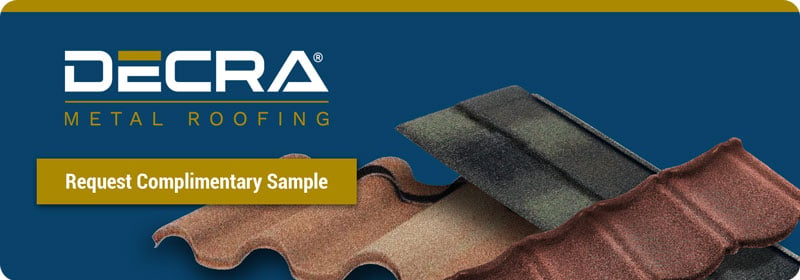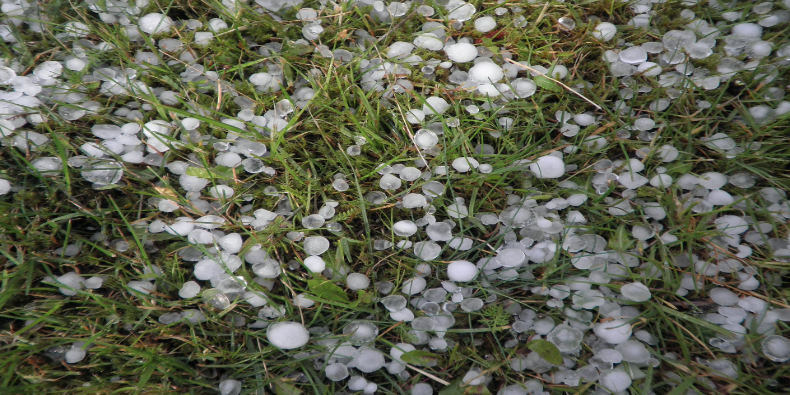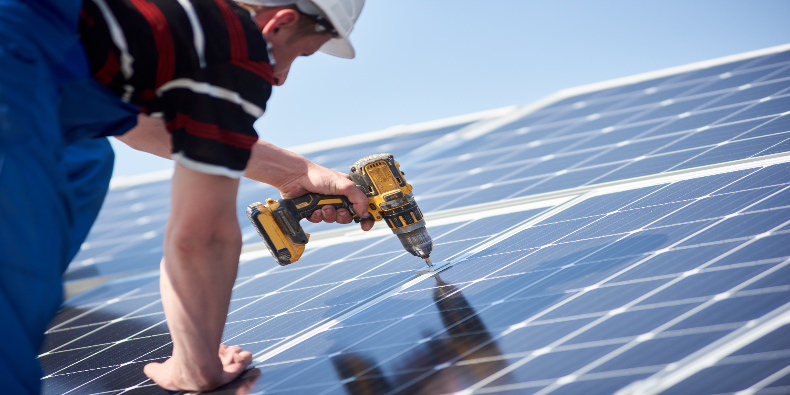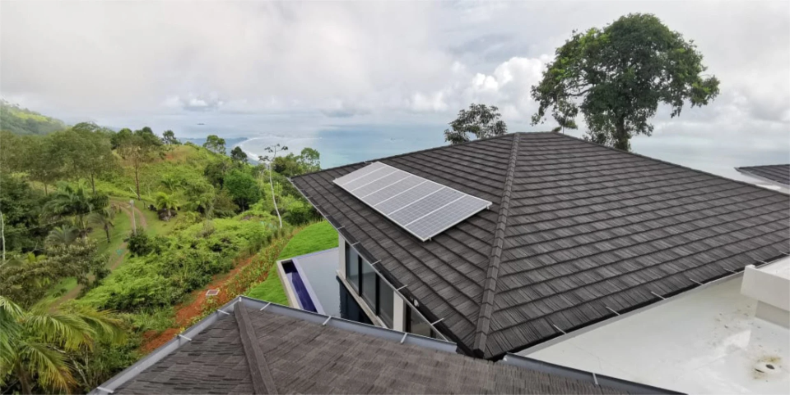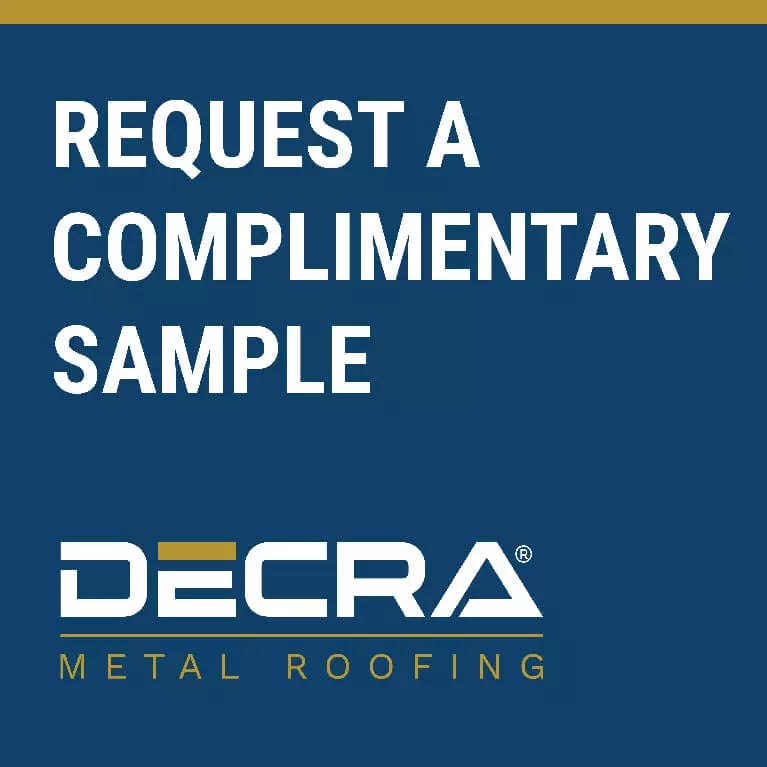DECRA Metal Roofing is one of the highest performing roofing systems available in the United States today. Homeowners choose DECRA for its exceptional durability, long lifespan and reliable performance in virtually any climate.
Learn more about our manufacturing process in this blog, including:
- The fascinating origins of DECRA’s technology and its connection to an Allied mission during World War II
- The multiple layers and advanced coatings that give DECRA its unmatched strength and beauty
- The meticulous manufacturing process that translates into real benefits for homeowners
Once you understand how DECRA is made, you’ll feel even more confident about selecting it for your next roof remodel or construction project.
A Brief History of DECRA Metal Roofing
During World War II, Britain faced devastating air raids and needed to rebuild strategic buildings quickly using whatever materials were available. Corrugated metal sheets became a go-to solution, but they came with a dangerous drawback. Their reflective surfaces were easy targets under German flares.
To solve this problem, Allied Command turned to a local bituminous emulsion manufacturer, The Decraspray Co. Tasked with creating a camouflage solution, Decraspray’s industrial chemists developed a coating with three essential qualities:
- Waterproof, which was important in a rainy environment
- Durable, with no worries about needing replacement soon
- Able to camouflage metal sheets to hide buildings from Axis powers
After the war, Decraspray chemists made a fascinating discovery. The coating they created had bonded so well to the corrugated metal that it was nearly impossible to remove. And when they were finally able to remove it, the underlying metal was in perfect condition! This was even after a decade of exposure to the elements. Soon, Decraspray began selling the formula to industrial developers and contractors.
In 1957, New Zealand industrialist Lou Fisher experimented with Decraspray’s formula, applying it to galvanized steel roof tiles and adding crushed stone granules for improved function and curb appeal. This innovation resulted in the launch of the world’s first stone-coated steel roof tiles, originally marketed as Decramastic. Over time, the product evolved into DECRA Metal Roofing and has been continuously improved ever since.
Our ISO (The International Organization for Standardization) certifications demonstrate our commitment to quality, plus workplace and environmental safety:
- ISO 9001 certification for its quality management system
- ISO 14001 certification for its environmental management system
- ISO 45001 certification for its occupational health and safety management system
This legacy of innovation, craftsmanship and reliability has made DECRA the world leader in stone-coated steel roofing systems.
What Is DECRA Stone-Coated Metal Roofing Made Of?
DECRA’s unmatched durability and performance come from a carefully engineered, five step manufacturing process. Each layer and coating contributes to the strength, beauty and long lifespan. Here’s how it all comes together:
- Fabrication and stamping of the high-grade steel panel blanks
- Application of the base coat
- Bonding of granular stone chips
- Protective overglaze coat
- Final curing of the finished stone-coated steel product
Let’s peek at these layers in a little more detail. They’re the key to DECRA’s incredible durability and cost effectiveness.
Steel
Structural quality steel sheets are the base of all DECRA roofing products. These sheets are engineered for strength and flexibility, with an elongation capability of at least 22 percent, ensuring the panels can withstand installation stresses and extreme weather conditions without cracking. DECRA steel meets the highest industry standards, including ASTM A 792/A 792-10 grade 37, providing consistent quality and long-term performance.
Zinc-Aluminum Alloy Coating
Next, the steel is hot-dip coated with a protective metallic layer composed of aluminum, zinc and silicon. This alloy creates a bonded shield that resists corrosion far more effectively than a single metal coating could on its own. The result is exceptional anti-corrosion strength, which is especially vital in challenging climates such as coastal, rainy, snowy or humid environments.
Silicon
DECRA’s corrosion resistance is further enhanced with the addition of a silicon layer. This helps the metal better bond with the steel, preventing separation over the roof’s lifetime. Silicon also lends flexibility to the roofing panels, which allows for bending during installation without compromising the internal layers.
Acrylic Resin Coatings
After alloy coating, both sides of the steel are finished with an advanced acrylic resin coating. This crucial step provides multiple benefits:
- It helps panels resist fingerprints and scuff marks during handling and installation.
- The formulation creates an optimal bonding surface for the final layer of mineral granules.
- It provides additional protection from corrosion and UV weathering from the sun.
Stone-Coated Granules
The final application of stone-coated granules is the bridge between DECRA’s durability and its aesthetic appeal. Natural granules of various sizes are coated with fade-resistant pigments and applied to the panels. Not only do the granules add to DECRA’s weather resistance, they also transform metal roofing into profiles with the texture and color of traditional roofing materials like asphalt shingles, clay tiles, and wood shakes. It’s so well done that even picky HOAs and gated communities are jumping on the DECRA wagon when it comes to matching existing roofing.
How the DECRA Manufacturing Process Protects Your Home
As a homeowner, you’ll appreciate DECRA’s thorough approach to manufacturing every stone-coated metal roofing panel. The result is longevity, resistance to severe weather, and cost savings, all while delivering a beautiful roof! Here are some of the standout benefits:
- Exceptional Longevity: A roof that lasts 2-3 times longer than most traditional roofs, meaning you’ll not likely need to replace your roof again in your lifetime
- Higher Home Value: An increase of up to 6% in home value for resale or building equity, thanks to DECRA’s superior protection and good looks
- Extreme Weather Resistance: High impact resistance against 2.5-inch hailstones, wind resistance in speeds up to 120 miles per hour, and resistance to wind-driven rain
- Top Tier Fire Safety: The highest possible fire rating from Underwriters Laboratories at a time when wildfires are on the rise across the entire nation
- Improved Energy Efficiency: The ability to reduce cooling costs by up to 25%, due to DECRA’s reflective surface that doesn’t absorb heat from the sun
- Sturdy Hollow Core Design: Panels are engineered to handle heavy snowfalls and minimize ice damming by reducing temperature fluctuations across the roof.
- Insurance Savings: The potential for insurance discounts when many carriers are raising premiums or dropping customers entirely for claim risk
DECRA can often be installed directly over asphalt shingles and can be installed during any season of the year, with no temperature limitations or requirements. And it’s considered sustainable, which is beneficial to the planet too.
We’ll Send You a Sample of DECRA—Just Ask!
Ready to make DECRA stone-coated metal roofing your choice for your next roof remodel? Why not take a look at it up close, so you can see how durable and attractive it is?
Just request a complimentary sample, and we’ll send you one. To see how DECRA would look on your entire roof, try our online visualization tool and prepare to be amazed!
Editor's Note: This blog was originally published in February, 2024 but has been updated with relevant information.

